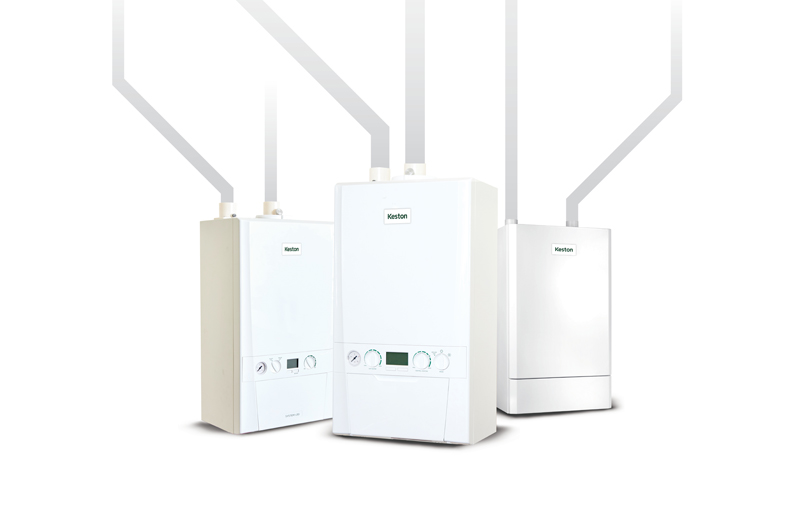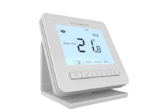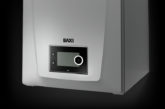
Boiler installations can present a number of challenges for installers, as not all are the same. There are many elements that need to be considered such as the boiler position, flue termination and regulations regarding the property. Keston explains how its twin flue solutions can help.
Twin flue boiler systems can offer a solution to installations that require a longer flue run. For example, Keston’s boilers are able to run their flues up to 27m, for greater flexibility on the boiler position. This added benefit allows for boilers that cannot be flued directly through an external wall, such as those in a basement room.
Flue termination has requirements set by BS 5440-1: 2008. This regulates the main function of flue termination, that the products of combustion are effectively discharged to the outside air under all weather conditions. Any openings need to be designed to prevent any debris getting into the system that could have an effect to the performance of it. Relevant details are outlined within the boiler manufacturers’ installation guides, which ensure the safe operation of the appliance and prevent the position of the flue causing detriment to others.
Flexible thinking
The vast majority of domestic boilers are designed with a concentric flue system, where the air supply and flue gases are managed within one flue. They are designed with a duct within a duct, with the exhaust gases taken away through the inner duct and the combustion air drawn in through the outer duct.
Twin flue boiler systems will continue to perform the same task as concentric systems; however, they do allow for further flexibility in distance. Both systems have an air flue and a gas flue, but in a twin flue installation the flues do not run within one another, they run separately. This type of system offers a different way to install boilers.
For example, the twin flue runs are not restricted to run parallel, meaning that the air flue will not be limited to the same restrictions as the combustion flue. This added benefit means the combustion gas pipe can run further to the desired termination point, while the air pipe can run through the nearest external wall next to the boiler. The maximum length for both flues on a Keston boiler can run up to 27m in total. For example, the air flue can be terminated 3m away from the boiler, allowing the remaining 24m left for the combustion flue run.
Classic cases
Historically, boilers were installed in kitchens across the UK when kitchens were situated within the basement of houses. As heating methods in the UK have developed, the position of the boiler in older properties often remains in the basement. These installations require a longer boiler flue to meet the requirements for flue termination. Rather than dealing with the additional work and cost of moving the boiler position, twin flues can be used to provide the extra length that is needed without any hassle.
There are also certain properties where twin flues could be used to benefit the installation, for instance ‘landlocked’ flats. These types of properties often lack sufficient external wall space for the flue termination to be placed; for example, there may be a balcony or windows near where the flue termination would normally be. This means a longer flue will be needed to extend towards the roof.
Properties may have additional legislation to consider regarding flue runs, such as listed buildings. There are over 500,000 such properties in the UK which are protected so that they are preserved for future generations. Amongst many other regulations, there are some that would affect the flue run. Flues cannot be positioned in front of the property or any part that would be seen from a highway, meaning that a more flexible solution will be needed for installers to comply.
Doubling up
There are a number of benefits to using twin flue – one of which would be the cost difference. Twin flue boiler installations require manufacturer approved, small diameter (50mm) muPVC (PVC-C) solvent weld pipes, one for the air duct and one for the combustion gases. Solvent weld pipe is sold at a fraction of the price when compared to concentric flues.
It is also advantageous to retrofit existing twin flue installations rather than moving a boiler to fit a concentric flue. If the original boiler position was within an area that did not have straight access to an external wall, the consideration of moving the boiler, gas and water pipework and flue runs would not need to be taken into account if a direct replacement is fitted.
When using a twin flue system, there are additional measures that need to be considered, such as the Gas Safe technical bulletin TB200/TB008 regarding flues in voids. Where boilers are located away from an external wall, the flues are likely to run through the ceiling or wall voids. In these cases, inspection hatches are required to be installed along with the flue runs to ensure safety checks can be completed. The inspection hatches are intended to allow visual inspection of the concealed system, rather than having full physical access. To ensure flues can be examined thoroughly, inspection hatches should be 300 by 300mm in size and no flue joint within the void should be more than 1.5m away from the edge of the nearest inspection hatch.
Making space for these hatches could mean additional remedial work would need to be done, such as added plastering after the hatches have been completed.
There are other elements that need to be considered outside of BS 5440-1: 2008, such as all flues needing to be adequately supported and all joints other than approved push-on or plastic compression connectors being made and sealed with solvent cement suitable for the manufacturer approved muPVC (PVC-C) flues and confirming to BS 6209.
British built since 2013, Keston Boilers offers heating solutions for both domestic and commercial installations, with twin flue capabilities that can provide a useful solution for installers, particularly in the cases mentioned above. Free training is available at the Training Centre of Excellence sites in Hull, Leeds and Reading.
Boosts for installers
Keston has recently increased its points on its loyalty scheme for engineers, who will now be able to benefit from higher points for each boiler they install on Installer Connect, Ideal Boilers’ customer loyalty scheme. Points for Keston boilers have been increased and categorised into bandings. The updated amounts for Keston Combi and System boilers start at 46 points (£15) in Bronze, moving on to 80 points (£26) in Silver and 107 points (£35) in Gold, while Keston Heat boilers are worth 100 points (£33) across both Bronze and Silver and 140 points (£46) for Gold.













